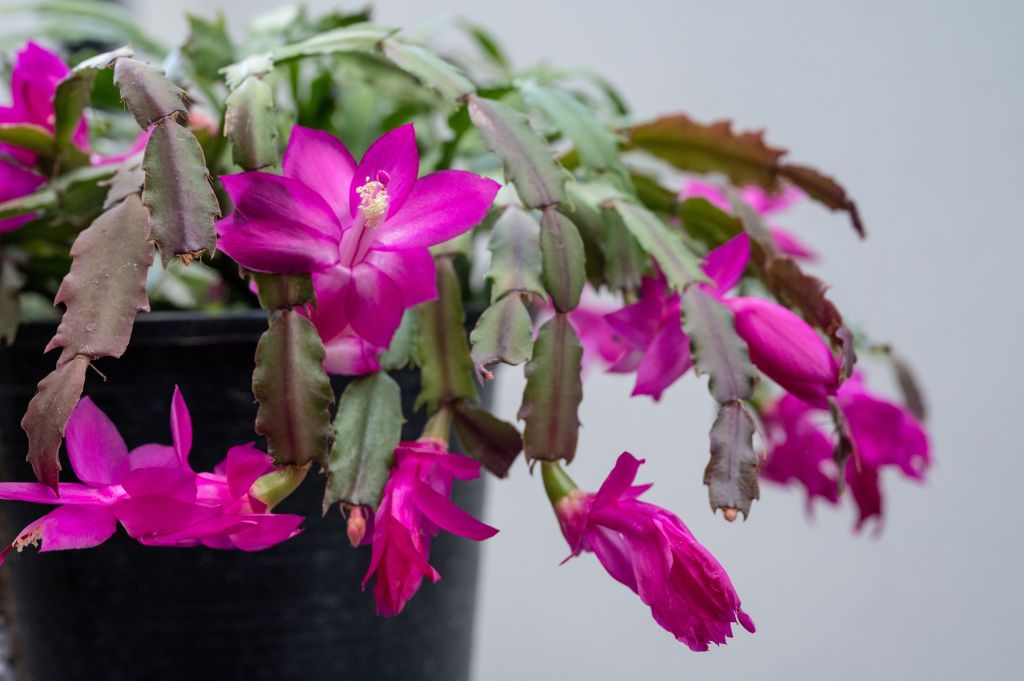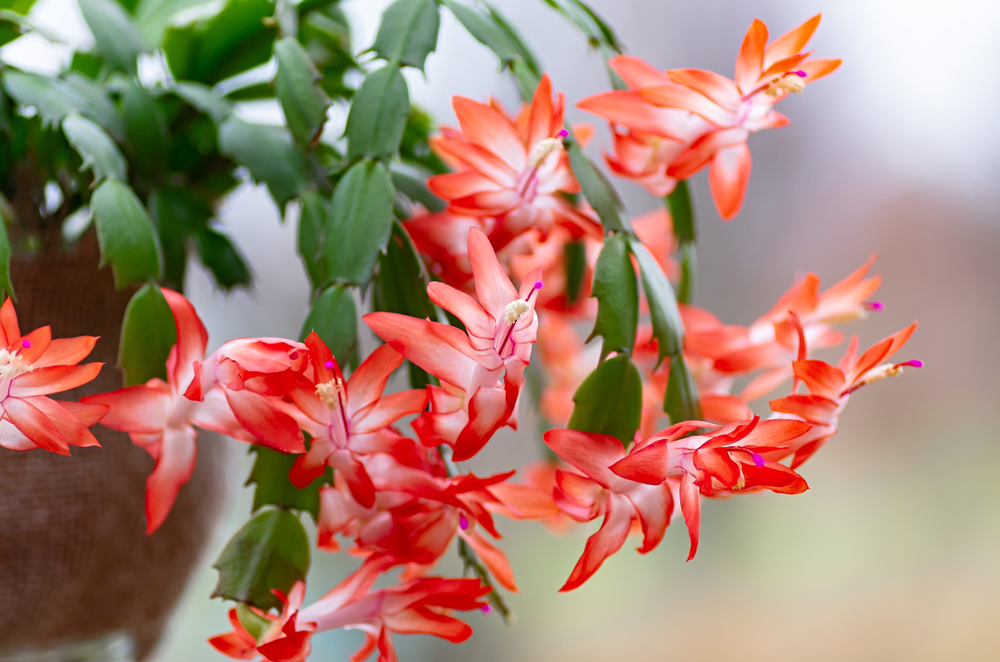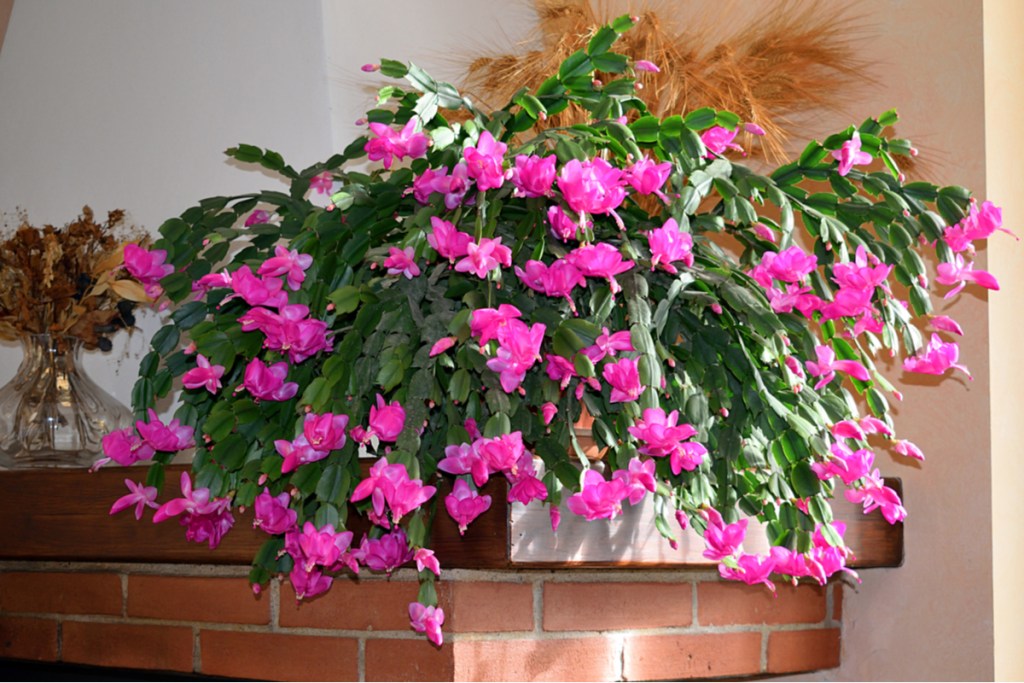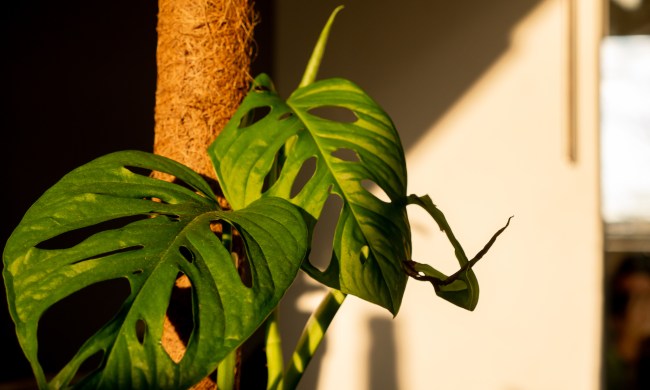Friends and families share holiday cacti every year, but how do you know if you have a Thanksgiving cactus plant or a Christmas one? When comparing a Thanksgiving cactus vs. Christmas cactus, it’s easy to see why people are unsure. These cacti are closely related and are difficult to tell apart. Even their flowers look alike! So, how are you supposed to know which type of cactus you have? Does it even matter, or do these similar plants have the same needs? We’ll answer these questions and more in this simple guide to holiday cactus plants.
What is a Thanksgiving cactus?

The Thanksgiving cactus, or Schlumbergera truncata, is actually a succulent and not a cactus. The best way to distinguish this plant from a Christmas cactus is by inspecting the leaves. The leaves of a Thanksgiving cactus are much pointier than those on a Christmas cacti. In addition, each segment has serrated sides with pointed spines. These toothed edges are likely why this plant is also known as “Crab Claw Cactus.”
You might also be able to spot the difference between these plants because of their flowers. While the flowers are very similar, a few minor details will help you figure it out. First, Thanksgiving cacti bloom around, you guessed it, Thanksgiving. Flowers can appear at the ends of each segmented “branch,” or they can bloom between segments. They come in red, pink, peach, purple, orange, or white. With all of this said, the best way to tell the difference is by looking at the anthers of the flower. On a Thanksgiving cactus, these are yellow — on the flip side, they’re pink or brown on a Christmas cactus.
The Thanksgiving cactus likes partial shade. However, you can offer them more light when they bloom, and they’ll still thrive. The “cactus” in their name might suggest otherwise, but when it comes to watering, they prefer soil that stays moist for a more extended period, and they don’t like to dry out completely between waterings. To ensure the plant has enough food to produce a lot of pretty blooms, you’ll want to provide it with plenty of fertilizer during the growing season.
What is a Christmas cactus?

A Christmas cactus, or Schlumbergera bridgesii, has a much softer look to its leaves than its Turkey Day cousin. The segments on a Christmas cactus have scalloped edges, and the ends almost look like they go straight across. The blooms of a Christmas cactus show up around Christmas time, but they can also appear around March and May. They are either pink or white, and you’ll want to look for those pink or brown anthers to ensure you have a Christmas cactus.
The Christmas cactus loves partial sun or diffused light, so a window with a thin window treatment would be perfect! It’s adaptable to most soil conditions, but it prefers its soil to stay moist. While the name cactus might make this confusing, it is technically a tropical foliage plant that loves water. Still, the Christmas cactus can handle some drought.
In early spring and summer, this plant will want a boost of fertilizer, and you can provide it with a water-soluble option or slow-release beads. However, be sure to stop fertilizing once you see flower buds, and then resume once the plant has finished blooming.
A bonus holiday cactus: The Easter cactus

Here’s another bonus holiday cactus for you to consider: the Easter cactus! While the Easter cactus looks very similar to the Thanksgiving and Christmas ones, it isn’t part of the Schlumbergera family at all. It’s technically classified as Rhipsalideae gaertneri, and you can tell it apart from the other holiday cacti because of its flatter, star-shaped blooms and extra smooth, rounded leaves with fewer ridges.
As its name implies, it blooms in the early spring months from March to May, producing red, orange, purple, and white flowers. The Easter cactus is triggered to bud by dry soil conditions and cool temperatures.
Which plant should you choose?

Deciding on which plant to choose as a gift for friends or family is simply a matter of preference. These plants are easy to care for, bloom during a time of year when most plants are dormant, and look so similar that it’s hard to tell them apart. However, if it matters to you that you give the plant on the proper holiday that it’s named after, we recommend taking our tips and tricks with you to the store. If you can tell the difference on your own, you can be sure that you’re not a victim of incorrect labeling.
How long do Thanksgiving and Christmas cacti live?

With proper care, both Thanksgiving and Christmas cacti can live for quite a while! Both plants have the same lifespan, so there’s no need to worry about which plant will live longer. On average, a well-cared-for holiday cactus can live for 20 to 30 years. Some have been reported to live even longer.
While having such a long lifespan can seem intimidating (that’s a long commitment to make), these plants are so easy to care for and so forgiving of missteps that you shouldn’t worry too much about it. Instead, focus on enjoying your plant for as long as you have it. If you find yourself getting tired of caring for your holiday cactus, they make great gifts!



